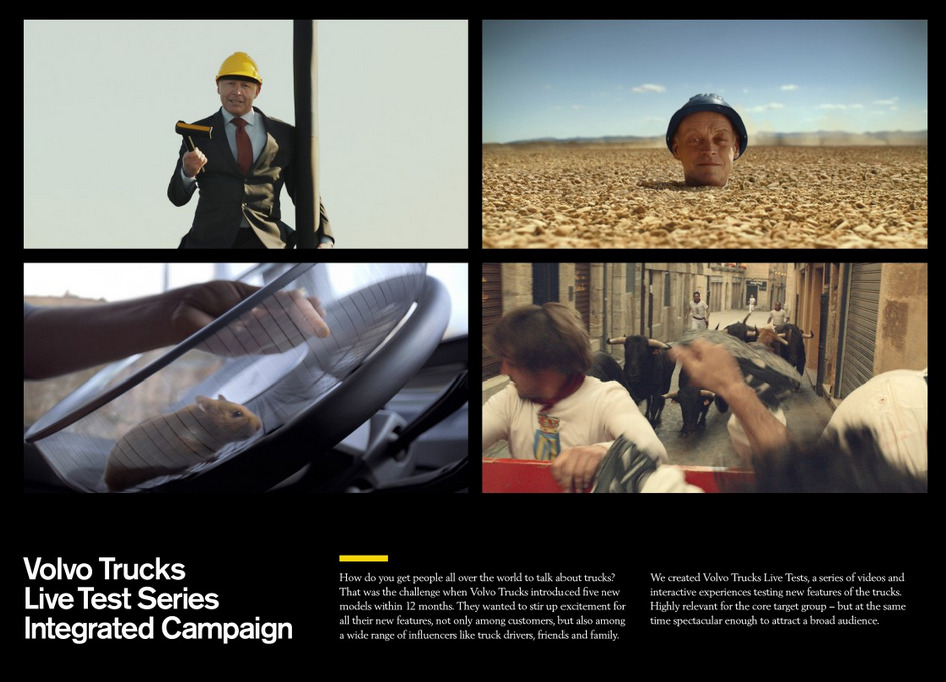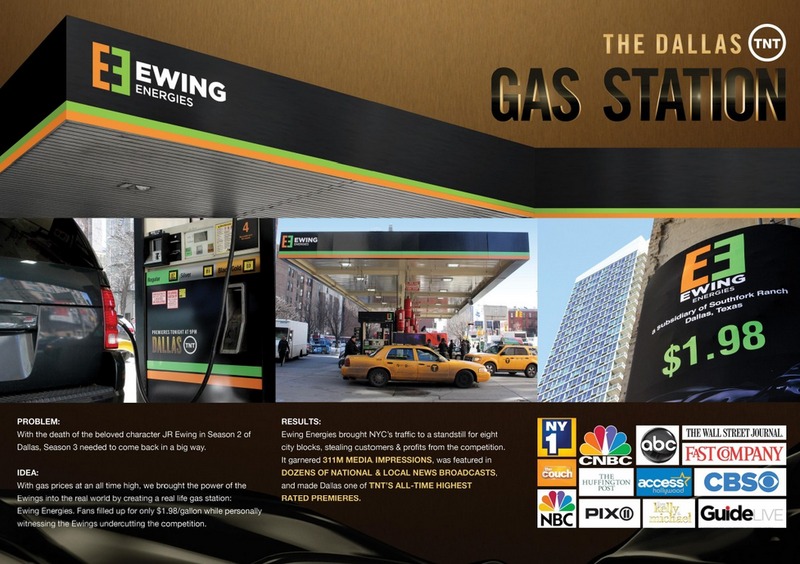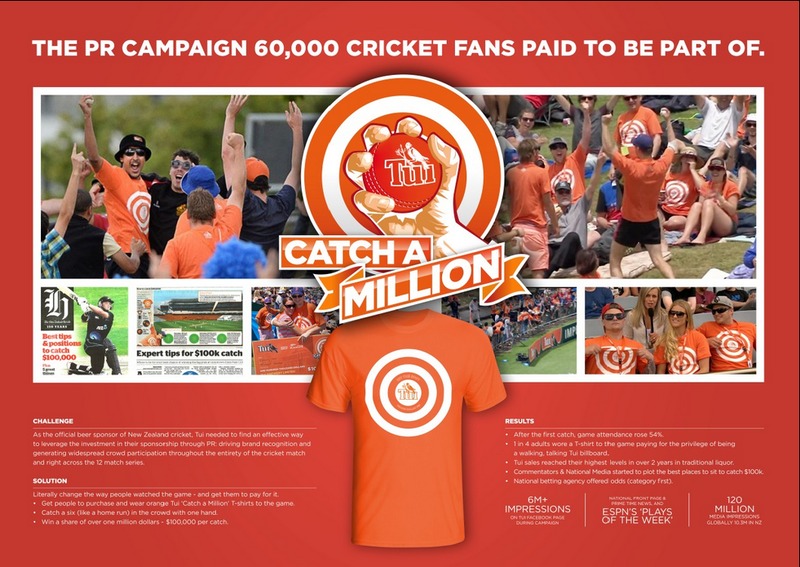Social good has gained significant traction at Cannes lately. Perhaps because of this, entries discussing "socially beneficial activities" that seem slightly off-track from a company's core business domain—making you wonder, "Why is this company doing that?"—have become more prominent, leaving me thinking, "Is this really appropriate?" Of course, there are genuine activities fulfilling true social justice. But honestly, I find myself utterly repelled by those that push their well-meaning agenda relentlessly, riding the trend and demanding, "This is good for society, right? So give us a 'Like'!" (Ah, saying this probably means I'll ruin my reputation again... Or maybe it's already in the gutter, so it's fine. Yay!).
The Grand Prix winner across four categories was a promotional campaign that stood in stark contrast to "social good."
PR professionals feel a fundamental sense of mission to "improve society through PR," so they get super hyped, thinking, "This is where we really shine!" Because of this, that tendency might be even stronger in the PR category. As a result, we can see that entries aimed at promoting regular products or services are at a slight disadvantage when it comes to being evaluated.
Meanwhile, notable entries emerged outside the PR category. The Grand Prix winner across four categories—Film, Titanium & Integrated, Press, and Promo & Activation—was a promotional campaign distinctly different from "social good." It was the 2013 Christmas campaign "Sorry, I Spent It On Myself," executed by UK agency adam&eveDDB for department store Harvey Nichols. It achieved the second-highest number of Grand Prix wins in history, following last year's "Dumb Ways to Die" with five Grand Prix wins, and garnered numerous awards including five Golds.
This campaign featured ads suggesting: "If you spend less on Christmas gifts for friends and family, you can spend more on yourself, right? Go for it!" It deliberately proposed unbelievably cheap gifts costing just £1-2 – like rubber bands, paper clips, or scrubbing brushes – for the typically obligatory gift-giving, eliciting laughter. It taps into the consumer insight: "I want to buy more for myself!" By including a touch of humor while actually providing a product range that supports this behavior, it makes the idea tangible.
This time, drawing inspiration from Harvey Nichols' campaign, we'll deliberately skip "social good" projects and focus on introducing initiatives that challenge new approaches to functional appeals driving sales, generating buzz, or securing media exposure. We call it: "The Twisted Cannes Journey: Seeking PR's Other Mainstream!" Alright, let's go!!
■Volvo Trucks "LIVE TEST SERIES"
 |
| Cannes Lions 2014: PR Gold, Cyber Grand Prix, Titanium & Integrated Gold, Direct Gold, Promo & Activation Gold, and numerous other awards |
When it comes to Jean-Claude Van Damme's split, it's just too much for us Showa-era B-movie action fans, myself included. Honestly, just that casting alone makes me want to cry. Lately, even boxing movies like "Revenge Match" starring De Niro and Stallone make me unexpectedly tear up a bit. It really makes me feel my age, you know? (sigh) Anyway, this video series is just plain fun. It's not just silly; it masterfully blends functional messaging into visuals that make you go "What the hell?!" "Huh? Seriously, what the hell is this?! You can actually do that?!" That exact reaction becomes Volvo Trucks' USP (Unique Selling Point) and sticks firmly in your memory as a key comparison point when considering a purchase. Man, that's clever. Or is it cheating? Oh, it's just advertising, right? (Typical dad puns included). Anyway, let's dive a bit deeper into the content.
Jean-Claude Van Damme's "THE EPIC SPLIT" won the Film Grand Prix and Gold in Film Craft and Cyber. However, this series of proof-of-concept videos, collectively called the "LIVE TEST SERIES," also won the Cyber Grand Prix, plus Gold in PR, Promo, Direct, and Integrated. While each category has its own evaluation criteria, from a PR perspective, the key point is that it clearly delivered results. Amidst the entertainment value, the functional appeal was effectively communicated. Consequently, about one-third of the target audience who engaged with this series of touchpoints visited dealerships or the official website. Furthermore, surveys revealed that roughly half of them expressed interest in considering the brand for their next purchase. Incidentally, this campaign reportedly competed for the Grand Prix in the PR Lions category.
Actually, upon closely reviewing the entry sheet, another aspect resonated with me: the communication target strategy. Typically, one might target professional truck drivers as the main audience, using print media they'd likely read to make a solid performance pitch. However, they took a broader view of the target. While actual drivers are certainly part of the core target, the real buyers – who may not drive themselves – are often business owners. These potential buyers seek advice and information through various channels.
For example, opinions from actual drivers, coworkers, financial consultants, competitors, customers, and even friends and family. While not every opinion might be spot-on, if positive feedback like "That's awesome!" or "That technology is the real deal" emerges across different layers, it naturally starts to sway their feelings. Yes, this aligns perfectly with what I often discuss: the strategic target audience—individuals surrounding the core target who can influence their decisions. And that's where we introduce content that's easy to share. In reality, this series begins without any guarantee of test success. However, the very fact that we can take on this challenge is understood as confidence in having already surpassed a certain level of performance, and thus the plan is executed. While I don't expect it, even if it's not 100% successful, I imagine the key appeal points will still come across effectively.
■TNT "DALLAS GAS STATION"
|

|
| Cannes Lions 2014: Gold in PR, Gold in Outdoor |
The goal was to generate excitement for season 3 of the Hollywood drama series "Dallas" and increase viewership. The show, broadcast by Turner Network Television (TNT), struggled with ratings in Season 2, so a PR campaign was planned to reclaim its place at the center of pop culture conversation in Season 3 by re-engaging existing fans and attracting new viewers. An event was held that realistically recreated the world of the drama in the city, creating the illusion that everyday people were participating in the drama themselves.
The setting is a gas station in New York City. John Ross Ewing III, the protagonist of the drama "Dallas" and a member of a wealthy Texas family that made its fortune in oil development, opens a one-day-only gas station with real price-breaking deals for the season 3 premiere. Residents from all over the city line up here. It's a situation straight out of the drama, with thrilling staging that blurs the line between reality and fiction. The protagonist, Ewing himself, performs the ribbon-cutting for the facility's opening and even interacts with customers. Naturally, the long lines are filled with people happily taking photos together. Even just getting gas makes customers so happy they tweet like crazy. Seriously, Americans genuinely enjoy and get excited about this stuff, don't they! Related information was released in detailed phases starting two weeks prior to maintain the campaign's momentum and surprise. Social media buzzed beforehand with conversations about which New York gas station would host the event.
The result? They sold out 10,000 gallons of gas in just 12 hours. Sure, you could argue the line was due to the incredibly low price (roughly half the market rate!) or that bringing a TV star into town was bound to cause a stir. But honestly, even if they'd held a premiere at a nearby hotel or theater, it probably wouldn't have generated this level of excitement. And ultimately, the key point might be that it made both consumers and the media realize, "Oh, there really are this many fans. Maybe I should give it another look!" – reinforcing its buzz and popularity.
The lesson here, which I often emphasize, is that "the same information can have different value depending on who delivers it." Furthermore, if there's an element of surprise in the 5W1H (who, what, when, where, why, how), you can capture people's attention. And, of course, the crucial part is "what" – it's even better if that "what" contains an essence ripe for storytelling. This entry might be less about a big idea and more about winning an award through such meticulous, multi-faceted execution.
■HEINEKEN NEW ZEALAND "TUI CATCH A MILLION"
 |
| Cannes Lions 2014: Gold Winner, PR Category |
This is Heineken's campaign to boost sponsorship for its "Tui" beer brand. Every year around Cannes, I'm reminded of cricket's global popularity – though most of that seems concentrated in places that preserve British culture. Ask them about baseball? "Baseball? What's that?" (laughs). "You don't know cricket? No way. You Japanese, you okay?" They really pile it on, and there are tons of people who get that passionate about it. The manufacturer wanted to boost engagement with the Tui brand among these fans. But the sponsorship impact wasn't really showing, so that's how the "TUI CATCH A MILLION" campaign started.
As some may know, in New Zealand, alcohol TV commercials can only air between 8:30 PM and 6:00 AM. This makes earned media crucial for alcohol brands. The key challenge was: how to promote the brand without advertising?
Here's how it worked. Official orange T-shirts in the brand's colors were sold for the campaign. Wear one while cheering at a cricket match, and if you caught a home run ball with one hand, you won $100,000! Man, people came half-joking, half-serious, going all out to catch it. They were wobbly from drinking beer, but they'd dive for the ball with such gusto—it was funnier than any blooper reel or highlight show.
There was no actual publicity agreement with the broadcasting networks, but the scene was so entertaining that the TV cameras just kept following it (laugh). So, every time, the media buzzed more about that than the actual game itself. Even the live commentators would give advice on where it was easier to catch a home run. The screen shows a swarm of orange T-shirts scrambling after the ball, yet it looks refreshingly cheerful and fun.
I thought to myself: This is a new kind of product placement, right? And it's not forced—it just naturally catches your eye. Plus, the scene is so entertaining that everyone, including the media, can't help but follow it. It's on a whole different level compared to the subtle, unobtrusive product placement you see in Japan. The result? Record sales over the last two years. Though the scope was narrow—just over a month during the summer season's 12 matches—broadcasts showed the delightful sight of one in four spectators wearing orange T-shirts and running around the stadium.
※Product Placement: A marketing technique used in TV shows, movies, etc., where a company's product is used or its product/logo is shown, aiming to promote the product without making consumers consciously aware it's advertising.





